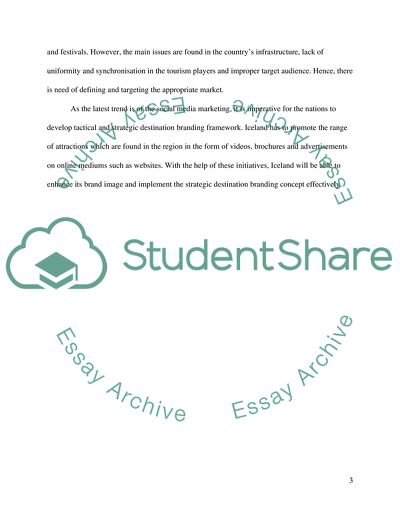Cite this document
(Evaluation and Rebranding of Iceland as a Tourist Destination Research Paper Example | Topics and Well Written Essays - 3750 words, n.d.)
Evaluation and Rebranding of Iceland as a Tourist Destination Research Paper Example | Topics and Well Written Essays - 3750 words. https://studentshare.org/tourism/1821066-evaluate-and-rebrand-a-city-destination
Evaluation and Rebranding of Iceland as a Tourist Destination Research Paper Example | Topics and Well Written Essays - 3750 words. https://studentshare.org/tourism/1821066-evaluate-and-rebrand-a-city-destination
(Evaluation and Rebranding of Iceland As a Tourist Destination Research Paper Example | Topics and Well Written Essays - 3750 Words)
Evaluation and Rebranding of Iceland As a Tourist Destination Research Paper Example | Topics and Well Written Essays - 3750 Words. https://studentshare.org/tourism/1821066-evaluate-and-rebrand-a-city-destination.
Evaluation and Rebranding of Iceland As a Tourist Destination Research Paper Example | Topics and Well Written Essays - 3750 Words. https://studentshare.org/tourism/1821066-evaluate-and-rebrand-a-city-destination.
“Evaluation and Rebranding of Iceland As a Tourist Destination Research Paper Example | Topics and Well Written Essays - 3750 Words”. https://studentshare.org/tourism/1821066-evaluate-and-rebrand-a-city-destination.


